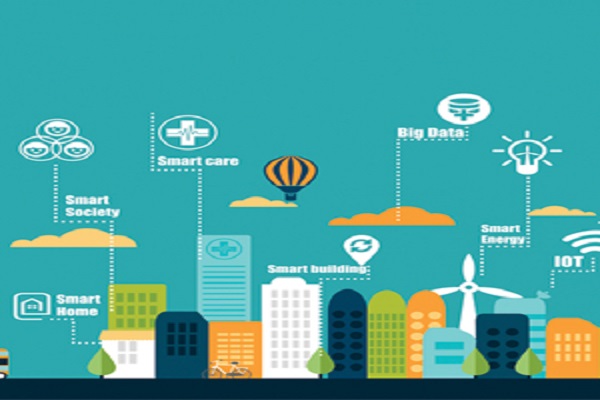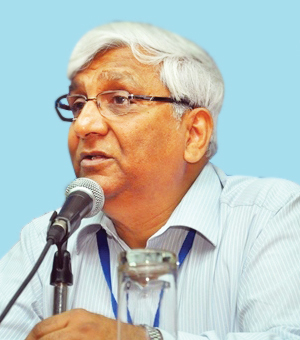
What is a Smart City?
In a Smart City, the investments made in social and human capital and in different communication infrastructure would create a sustainable economic development and maintain a high standard of living, along with a wise management of natural resources through participatory action and engagement between authorities and citizens. The ‘smartness’ should prevail in economy, people, mobility, environment and in living.
When an existing city can be called a Smart one?

When the objects or processes of a city, from any existing mechanism, transform into specific, measurable, attainable, relevant and time-bound intelligent and self-aware systemic processes, which lead to a faster, cheaper, efficient and effective platform for the stakeholders’ engagement, then the city can be called a Smart City.
What is the most important component of a Smart City?

ICT is the most important component of a Smart City. It can be deployed abundantly in the city authority’s business functions of planning, development, administration, execution of all sorts of citizen services and monitoring. ICT is the common thread for qualifying a Smart City in the context of electronically governed simple, accountable, responsive and transparent city authority.
How ICT can be meaningfully used in a Smart City?
ICT can be very successfully used for planning and development, important decision making by obtaining online feedback from citizens, infrastructure creation and maintenance. It can also provide informational, interactional and transactional services to the citizens, management of city assets like transport systems, lands, roads, natural resources and environment, and in other innovative applications for specific and new services for citizens.
What the ‘governance’ should look like in a Smart City?
In a Smart City, eGovernance is embedded in the functioning of almost every administrative and service providing department. The entire governance would be ‘online’ leading to a ‘less paper’ governance environment. Citizen will have minimum physical interactions with any government department to obtain a scheduled service.
What are the important steps to achieve ‘smart government’ in a city?
The citizens should approach a single window with many channels for all interactions with the authorities, like one city portal having hyperlinks to departmental websites that can be accessed through Internet. All payment transactions would be done online. A governance mechanism comprehensively joined at the back-end using ICT is the singular step to achieve a smart government.
How this ‘online service’ to citizens can be achieved?
Under the NeGP, e-District MMP has implemented online delivery of a basket of citizencentric services at the district administration level. This model can be replicated for a city where all citizen-centric services can be connected at the back-end. It can also be provided through a city service portal. For the back-end automation of city departments, another MMP, that is, e-Office, can be replicated where the city authority can take executive decisions on mandatory delivery of all services electronically.
Can ICT be used effectively for public transportation system in a city?
Intelligent Transportation System is a seminal pre-requisite for any Smart City. ‘Intelligence’ would come from the use of GPS in the public transport vehicles. It will be capturing traffic-related data at strategic locations and transmission over dedicated high speed data communication network, comprehensive monitoring and control of traffic mobility, electronic signalling system, monitoring and control of various components of multi-modal public transport like Metro, rapid transit system, feeder transport, separate dedicated pathways for buses, cycles, pedestrians crossings, etc. ICT can be used in all aspects of creation and maintenance of city transport infrastructure with automated operation.
What are the other areas in city where ICT can be efficiently used?
In a Smart City, GIS systems can be used for information gathering and decision making for asset management and maintenance. Many commercial COTS software solutions, coupled with GIS software, are now available, which create efficient MIS for management of fixed and movable assets of a city. Further, a City Portal can be created, which would assist collaborative information exchange between citizens, businesses, knowledge institutions and government departments. ICT can also be used to create smart mobility for citizens and tourists for information exchange in physical space, or by deploying tele-text embedded digital screens at strategic locations and by smart citizenfriendly road signage. In cyber-space, it can be accessed through kiosks for public telecommunications and Internet network.
What makes ICT deployment in a city so feasible?
Development of sensor technology and availability of various types of robust electronic sensors, RFID tags, CCTV, wireless transceivers, etc., singularly made large-scale deployment of end-to-end ICT- based systems in a Smart City, such sensors located at strategic data capturing points can capture and send high speed data through integrated transmission network.
Can government departments handle all these seemingly ‘hi-tech’ activities?
Globally, it is a practice to adopt PPP model to deliver citizen services and for many other attributes, including infrastructure creation and management of a smart city. The technology part, associated risks and non-sovereign activities, are passed on to the private partner. The Government stipulates the service guidelines and robust Service Level Agreements (SLA), with provision of penalty for violations and incentives for better achievements.
What the government has to do now?
The first and foremost job of the government is to create appropriate policy environment to facilitate institutional reforms so that singularity of agency in city governance is established unambiguously. Single room with a single roof and single window for our city governance structure is absolutely necessary. Secondly, the government has to ensure availability of the two essential ingredients, namely, uninterrupted, reliable, clean power supply and demand- assigned high speed bandwidth in the designated smart cities, for the technology interventions to take off smoothly. The government has to also create an environment conducive for bringing in culture of smart living.
Be a part of Elets Collaborative Initiatives. Join Us for Upcoming Events and explore business opportunities. Like us on Facebook , connect with us on LinkedIn and follow us on Twitter, Instagram.












